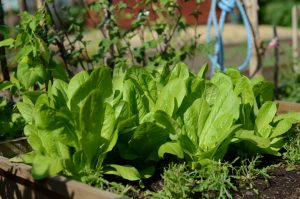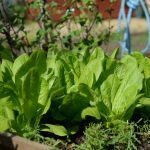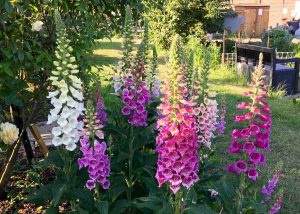
Maintaining soil structures and planning ahead
- Hoe off weeds on bare soil, water well then cover with mulches to prevent moisture-loss. For instance, pile grass clippings onto layers of newspaper.
- Do not leave soil bare for any length of time. Green manures, Crimson Clover, White clover, Phacelia, Summer Quick Fix can all be sown now.
- Add material to compost heaps, mix greens (nitrogen rich) with browns (carbon rich) at 50/50 ratio. Water heaps if dry and turn to speed up decomposition.
Sowing and Growing
- In early July continue to sow beetroot, chard, perennial spinach, kohl rabi and turnips for autumn harvesting.
- Sow dwarf French beans.
- Sow kale for early spring harvesting and rocket for autumn harvesting.
- Sow basil under cover until the middle of the month.
- Sow beetroots Choggia or Burpees Golden for autumn eating.
- Plant specially prepared potato tubers for Christmas crop.
- Finish planting out leeks.
- Remove the main shoot on cordon tomatoes where they hit the greenhouse roof, or a leaf or two above the seventh flower truss and continue feeding once a week.
- Water soft fruit and fruit trees during dry spells to encourage good fruit development.
- Water courgettes consistently so they continue to flower and crop.
- Mulch brassicas after rain with composted stable manure to lock in moisture and nutrients and lessen the effect of club root.
- At end of month chop back perennial herbs such as chives, sorrel, marjoram to encourage fresher leaves within a few weeks. If left to flower they may lose flavour.
- Pinch out climbing beans once they reach the top of supports.
- Prune cherries and plums after fruiting. Remove weak, damaged and crossing branches.
- Thin overcrowded apples, pears and plums to get larger and better quality fruit.
Harvesting
- Pick black, red and white currants and summer-fruiting raspberries.
- Courgettes, spinach, cucumbers, beetroot , French beans, salad crops and greenhouse tomatoes can be harvested.
- Continue digging second early potatoes.
- Once harvesting of summer fruited raspberries is finished, cut old fruited canes to ground level and tie in new, healthy canes to supports.
- After harvesting, summer-prune red and white currants and gooseberries. Trim back all gooseberry side shoots to 3 or 4 buds from their point of growth and cut out shoots that cross into the middle of the bush.
Gardening for Wildlife
- Thin out vigorous oxygenating plants in ponds, leaving them on the side to allow pondlife to crawl back into water. Keep around 30% of the surface free of weed.


